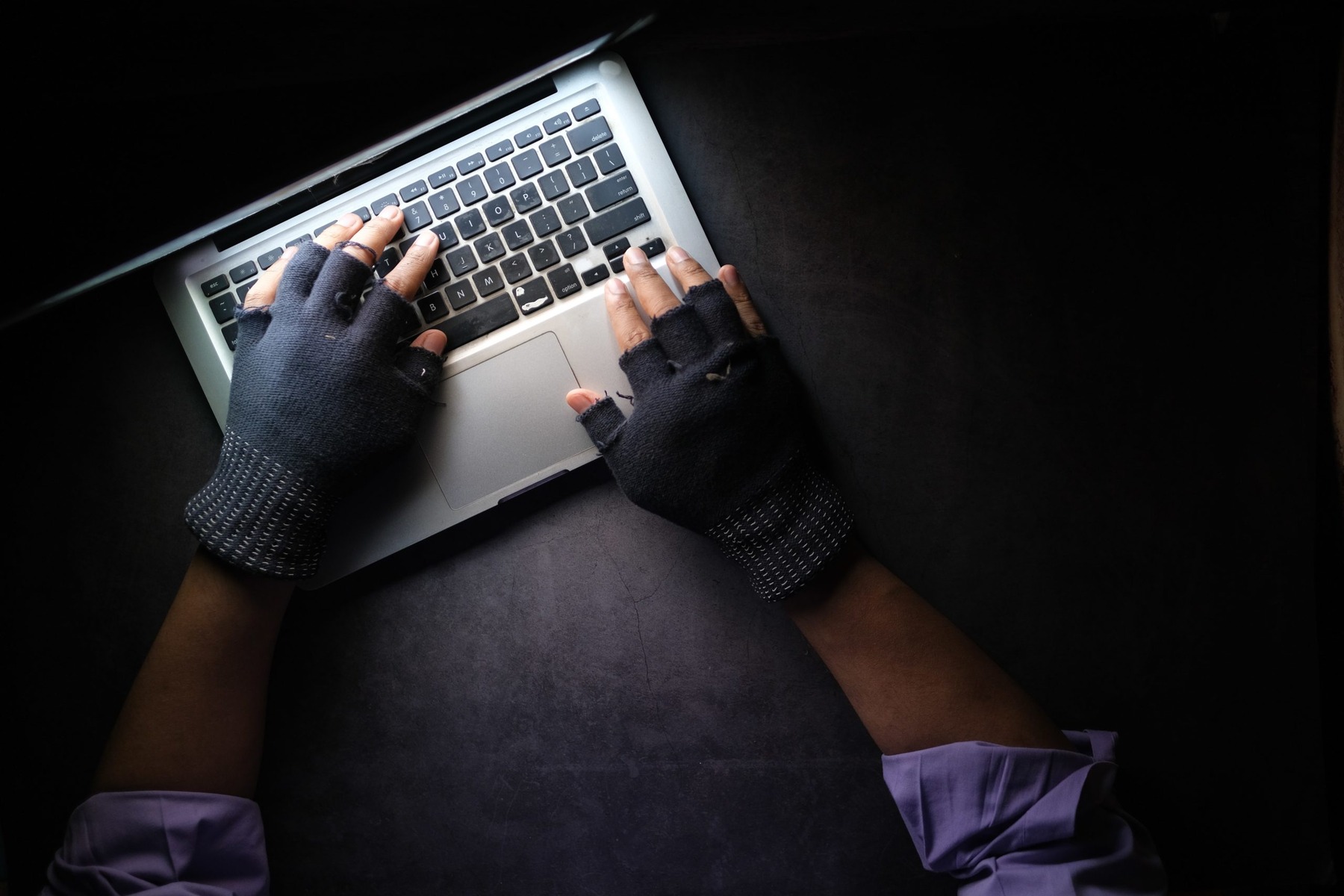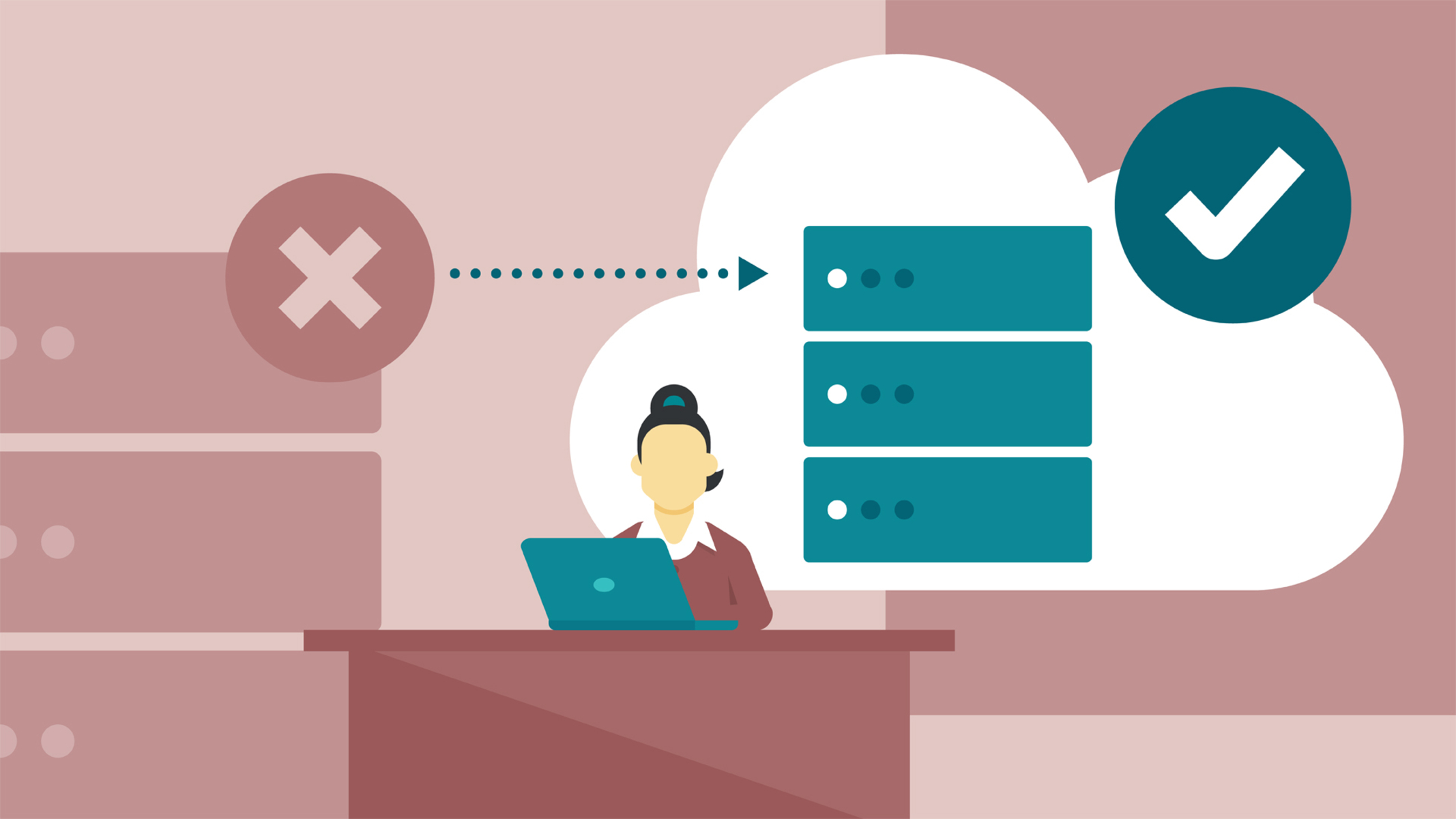Introduction
Adding a workstation to a domain is an essential step in network management and security. By joining a workstation to a domain, you enable centralized administration, policy enforcement, and user authentication. This allows users to access shared resources, such as printers and files, and ensures secure communication between the workstation and the domain controller.
In this article, you will learn how to add a workstation to a domain in a step-by-step manner. By following these instructions, you can successfully integrate your workstation into an existing domain and benefit from the advantages it offers. Whether you are setting up a new workstation or connecting an existing one to a domain, this guide will provide you with the necessary instructions to make the process seamless and efficient.
Before getting started, it is important to note that adding a workstation to a domain requires administrative privileges, as well as access to the domain controller or an account with sufficient permissions. Additionally, ensure that the workstation meets the minimum system requirements and is connected to the network. With these prerequisites in place, you can proceed with confidence.
So, if you are ready to add a workstation to a domain and reap the benefits of centralized management and security, let’s dive into the step-by-step guide on how to accomplish this task. Remember, by following each step carefully, you will successfully integrate your workstation into the domain and enhance your network infrastructure.
Step 1: Prepare the Workstation
Before joining a workstation to a domain, it is crucial to ensure that the workstation is prepared for the process. This involves checking the hardware and software requirements, as well as gathering important information about the domain.
To begin, make sure that the workstation meets the minimum system requirements for joining the domain. This includes having a compatible operating system, sufficient memory, and available storage space. Additionally, ensure that the workstation is connected to a stable power source and has a reliable internet connection.
Next, gather the necessary information about the domain. This typically includes the domain name, the domain controller’s IP address, and the network’s DNS server addresses. You can obtain this information from your network administrator or by accessing the domain controller’s settings.
It is also important to verify that the workstation’s clock is synchronized with the domain controller’s clock. This ensures that time-sensitive operations, such as authentication and Kerberos ticket requests, function correctly.
Furthermore, consider disabling any third-party firewalls or security software temporarily. These types of software can sometimes interfere with the domain joining process. Once the workstation is successfully joined to the domain, you can re-enable the security software while ensuring that its configuration allows for proper communication with the domain controller.
Lastly, create a local user account on the workstation that will serve as a backup login option in case there are any issues joining the domain. This account can be used to troubleshoot connectivity or authentication problems.
By following these preparation steps, you will ensure that the workstation is ready to be joined to the domain. This will help minimize any potential issues and facilitate a smooth domain joining process. Now that you have prepared the workstation, it’s time to move on to the next step: connecting to the network.
Step 2: Connect to the Network
In order to join a workstation to a domain, it is essential to establish a connection to the network. This involves connecting the workstation to a reliable network source, such as a local area network (LAN) or a wireless network.
First, ensure that the workstation’s network adapter is properly installed and functioning correctly. You can check this by navigating to the device manager and verifying that the network adapter is listed without any errors or warnings.
Next, connect the workstation to the network by either using an Ethernet cable or connecting to a wireless network. If using an Ethernet cable, ensure that it is securely plugged into both the workstation’s network port and the network switch or router. If connecting to a wireless network, ensure that the workstation’s wireless adapter is enabled and scan for available networks to connect to.
Once the network connection is established, ensure that the workstation is assigned a valid IP address. This can be done automatically through DHCP (Dynamic Host Configuration Protocol) or by manually assigning a static IP address that is within the network’s subnet range.
It is important to validate the network connectivity by pinging the domain controller’s IP address. Open the command prompt on the workstation and type “ping [domain controller IP address]” without the quotation marks. If the ping is successful and there is a reply from the IP address, it indicates that the workstation is successfully connected to the network.
In some cases, network connectivity issues may arise. If you encounter any problems, ensure that the network cable is not damaged or try connecting to a different network port or wireless network. You may also need to troubleshoot network adapter drivers or consult your network administrator for assistance.
By completing this step, you have successfully connected the workstation to the network. This ensures that the workstation can communicate with other devices on the network, including the domain controller. With the network connection established, we can proceed to the next step: installing Active Directory services.
Step 3: Install Active Directory Services
Before joining a workstation to a domain, you need to install the Active Directory services on the domain controller. Active Directory is a directory service provided by Microsoft that stores information about network resources and enables centralized administration of users, groups, and other network objects.
To install Active Directory services, ensure that you have administrative rights on the domain controller or have an account with sufficient privileges to perform the installation.
Begin by opening the Server Manager on the domain controller. If Server Manager is not already open, you can access it through the Start menu or by searching for “Server Manager” in the search bar.
In the Server Manager, click on “Manage” and select “Add Roles and Features.” This will open the Add Roles and Features Wizard.
Follow the on-screen instructions to proceed with the installation. On the Installation Type page, select “Role-based or feature-based installation” and click “Next.”
On the Server Selection page, choose the appropriate server and click “Next.” If you have multiple servers, ensure you select the one that will act as the domain controller for the workstation you are adding to the domain.
Next, on the Server Roles page, select “Active Directory Domain Services” and click “Next.”
Review the information and dependencies on the Features page, and then click “Next.”
On the Active Directory Domain Services page, review the information and click “Next.”
Proceed through the remaining pages, Review, Confirm Installation Selections, and Install. The installation process may take some time to complete.
Once the installation is finished, a notification will appear indicating the successful installation of the Active Directory services. Click on “Close” to exit the wizard.
By installing Active Directory services on the domain controller, you have prepared the network infrastructure to support the addition of workstations to the domain. In the next step, we will join the workstation to the domain.
Step 4: Join the Domain
Once the workstation is prepared and the Active Directory services are installed on the domain controller, it’s time to join the workstation to the domain. This step establishes a trusted relationship between the workstation and the domain, enabling centralized management and authentication.
To join the domain, ensure that you have administrative privileges on the workstation and have the necessary credentials to join the domain. You will need the username and password of a user account with sufficient permissions to join the domain.
Begin by accessing the Control Panel on the workstation. You can do this by clicking on the Start menu and searching for “Control Panel.”
In the Control Panel, select “System and Security,” then click on “System.”
In the System window, click on “Change settings” next to the “Computer name, domain, and workgroup settings.”
A System Properties window will appear. Click on the “Change” button next to “To rename this computer or change its domain or workgroup, click Change.”
In the Computer Name/Domain Changes window, select the “Domain” option and enter the domain name in the provided field.
Click on “OK” to proceed. You will be prompted to enter the username and password of a user account with domain joining privileges.
Enter the appropriate credentials and click on “OK.” If the credentials are valid, a message will appear confirming that the workstation has successfully joined the domain.
Click on “OK” and then click on “Close” to exit the System Properties window.
Reboot the workstation for the changes to take effect. After the reboot, the workstation will be fully integrated into the domain.
It is worth noting that joining a domain might require some time due to the replication of Active Directory information across domain controllers. If there are multiple domain controllers in the network, it may take some time for the changes to propagate.
By successfully joining the domain, you have established a connection between the workstation and the domain controller. In the next step, we will authenticate with administrator credentials to ensure proper access.
Step 5: Authenticate with Administrator Credentials
After joining the workstation to the domain, it is crucial to authenticate with administrator credentials to ensure proper access and privileges. Authentication verifies the identity of the user and grants access to domain resources based on their assigned permissions.
To authenticate with administrator credentials, log in to the workstation using the domain administrator account or an account with administrative privileges. When prompted for credentials, enter the username and password associated with the administrator account.
Once logged in, the workstation will establish a secure connection to the domain controller and retrieve the necessary information and policies. This process may take a few moments, depending on network speed and resources.
By authenticating with administrator credentials, you ensure that you have access to essential administrative functions and settings. This includes the ability to manage users, groups, and other domain objects, set up security policies, and access shared network resources.
During the authentication process, it is essential to verify that the workstation successfully receives group policies from the domain controller. Group policies are settings and configurations applied to workstations and users within the domain to enforce security measures and standardize computer management.
To verify group policy application, open the Command Prompt on the workstation and run the command “gpupdate /force.” This command forces an immediate update of group policy settings. If there are any errors or issues with the group policy application, they will be displayed in the Command Prompt.
If the workstation receives the group policies without errors, it indicates that the authentication and policy application processes were successful. You can now proceed to configure specific settings on the workstation to align it with the domain’s requirements.
By authenticating with administrator credentials, you establish your authority and access to perform administrative tasks on the workstation within the domain. This ensures that you can effectively manage and maintain the workstation’s settings and resources for optimal performance and security.
In the next step, we will verify the connection to the domain to ensure that the workstation is properly integrated into the network.
Step 6: Verify Connection to the Domain
After joining the workstation to the domain and authenticating with administrator credentials, it is crucial to verify the connection to the domain to ensure that the integration was successful. This step confirms that the workstation has established a reliable connection and can communicate effectively with the domain controller and other network resources.
To verify the connection to the domain, perform the following steps:
- Ensure that the workstation is connected to the network and has a stable internet connection. This is essential for proper domain communication.
- Open the Control Panel on the workstation by clicking on the Start menu and searching for “Control Panel.”
- In the Control Panel, select “System and Security,” then click on “System.”
- In the System window, verify that the domain name is displayed under “Computer name, domain, and workgroup settings.” This indicates that the workstation is successfully connected to the domain.
- Click on “Change settings” next to the “Computer name, domain, and workgroup settings” to access the System Properties.
- In the System Properties window, select the “Network ID” button located under the “Computer Name” tab.
- Follow the prompts to run the Network ID Wizard. This will test the network connection and verify the domain membership.
- If the Network ID Wizard successfully completes without any errors or warnings, it confirms that the workstation is connected to the domain.
- Additionally, you can validate the connection by accessing shared network resources, such as printers or files, to ensure that the workstation has the necessary permissions to access these resources.
By verifying the connection to the domain, you ensure that the workstation is properly integrated into the network and can access domain resources. This step is crucial to ensure that the workstation can function effectively within the domain environment.
In the next step, we will configure specific settings on the workstation to align it with the domain’s requirements and policies.
Step 7: Configure Workstation Settings
After successfully verifying the connection to the domain, it is essential to configure specific settings on the workstation to align it with the domain’s requirements and policies. This step ensures that the workstation adheres to security protocols, receives necessary updates, and follows standardized configurations.
Here are some key settings to configure on the workstation:
- Set up Windows Update: Configure Windows Update settings to ensure that the workstation receives important updates and security patches from Windows. This helps keep the workstation protected against emerging threats and improves its overall performance.
- Configure Firewall Settings: Enable or configure the firewall settings on the workstation to align with the domain’s security policies. This helps protect the workstation from unauthorized access and ensures that only necessary network traffic is allowed.
- Apply Security Policies: Review and implement security policies defined by the domain. These policies may include password complexity requirements, account lockout policies, and other security measures. Adjust the workstation’s settings accordingly to enforce the domain’s security policies.
- Map Network Drives: Map network drives to access shared resources such as files and folders on the domain. This allows users to access the necessary resources within the network without having to browse through the entire network structure.
- Install Software and Applications: Install any required software or applications on the workstation that are essential for user productivity and align with the organization’s policies. This can include productivity tools, security software, and other business applications.
- Configure User Privileges: Set up user privileges and permissions based on the user’s roles and responsibilities within the organization. Assign appropriate access levels to individual users or user groups to ensure data security and restrict unauthorized access.
- Set up Network Printing: Install and configure network printers to enable printing capabilities from the workstation to the available network printers. This eliminates the need for locally connected printers and promotes efficient printing across the network.
By configuring these workstation settings, you ensure that it adheres to the domain’s requirements and policies. This enhances security, improves productivity, and creates a standardized environment across the network.
In the next step, we will test the domain connectivity to verify that the workstation is functioning properly within the domain environment.
Step 8: Test Domain Connectivity
After configuring the workstation settings, it is essential to test the domain connectivity to ensure that the workstation is functioning properly within the domain environment. This step confirms that the workstation can communicate with the domain controller and access network resources effectively.
Here are some ways to test domain connectivity:
- Verify Network Resource Access: Access shared network resources, such as files and folders, to ensure that the workstation can connect to and retrieve data from the domain. This verifies that the domain connectivity is functioning correctly and that the appropriate permissions are in place.
- Test Internet Connectivity: Browse the internet from the workstation to ensure that it can access external websites and services through the network. This confirms that the connection between the workstation and the domain controller is not limited to internal resources.
- Perform Network Printing: Print a test document to a network printer to ensure that the workstation can successfully communicate with the printer and send print jobs over the network. This verifies that the printing functionality within the domain is working as expected.
- Check Active Directory Replication: If there are multiple domain controllers in the network, verify that Active Directory replication is functioning correctly. This ensures that changes made on one domain controller are replicated to others, maintaining consistency and integrity within the domain.
- Test User Authentication: Log in to the workstation using domain user credentials to test if the authentication process is functioning correctly. This confirms that users can access their accounts and resources within the domain.
- Monitor Event Logs: Check the event logs on the workstation for any error or warning messages related to domain connectivity or communication issues. These logs provide valuable insights into any potential issues that may affect the workstation’s connection to the domain.
By testing domain connectivity, you can ensure that the workstation is seamlessly integrated into the domain and can effectively perform necessary tasks and access network resources. Any issues discovered during this step should be promptly addressed to maintain optimal network performance.
Congratulations! You have now successfully added a workstation to the domain and tested its connectivity. With proper domain integration, centralized administration, and secure access to resources, your workstation is now part of a robust and efficient network environment.
Conclusion
Adding a workstation to a domain is a critical step in network management and security. By following the step-by-step guide outlined in this article, you can successfully integrate a workstation into an existing domain, enabling centralized administration, policy enforcement, and secure user authentication.
Throughout the process, it is important to prepare the workstation, establish a network connection, install Active Directory services, join the domain, authenticate with administrator credentials, verify the connection to the domain, configure workstation settings, and test domain connectivity. Each step ensures that the workstation becomes an integral part of the domain environment, adheres to domain policies, and can access network resources effectively.
By joining a domain, you gain access to various benefits such as centralized management, simplified user authentication, efficient resource sharing, and improved network security. Domain integration allows for standardized configurations and settings, making it easier to enforce security policies and manage workstation resources.
Remember to regularly review and update the domain’s security policies, user privileges, and workstation settings to ensure the ongoing integrity and performance of the network. Additionally, staying informed about updates and new features related to domain administration will help you optimize the workstation’s functionality within the domain.
By successfully adding a workstation to a domain, you contribute to creating a robust and efficient network infrastructure. Through seamless integration, you can enhance network management, improve user productivity, and ensure the security of valuable resources.
Now armed with the knowledge and understanding of how to add a workstation to a domain, you can confidently navigate the process and enjoy the benefits of a well-organized and secure network environment.

























